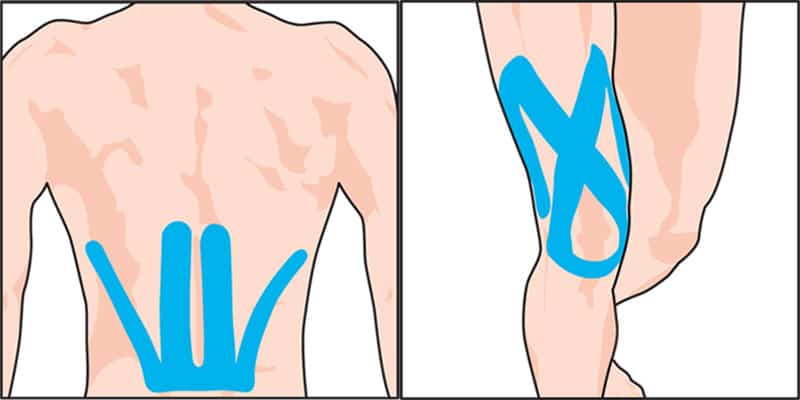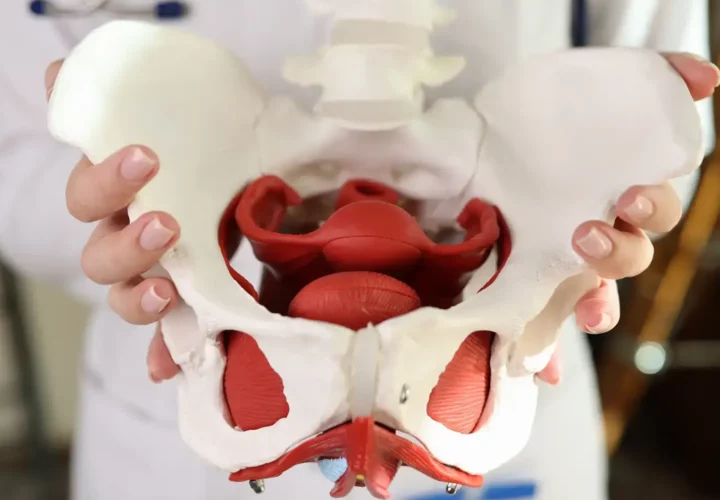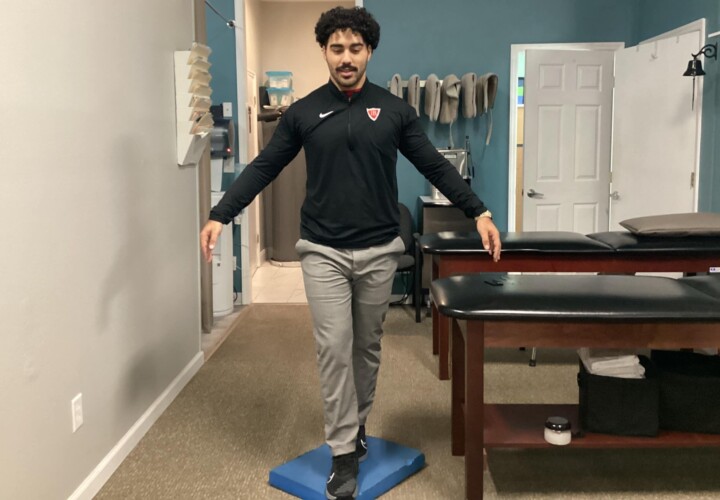While not a “cure all” that it may sometimes be advertised as, kinesiotape is still commonly used for good reasons! Because of how it was initially advertised though, some of these reasons can get really confusing. Luckily, I always like to make sure that what we are saying lines up with the best current research!
First
We can often improve pain in local muscles by laying the kinesiotape down over them. Although we cannot selectively excite or inhibit muscles by direction of pull. The idea here with the initial pitch was not entirely off base. Muscles can be affected by tactile cuing, but the idea that if you pull from close to far vs from far to close to very specifically affect the local nerves to do one or the other is not quite right. Irritated muscles tend to hold higher “tone,” that is resting activation level.
The reason for some knots and tender points, and in cases of high pain, we can see muscles have more difficulty firing because local nerves may prevent full output of muscles as a protective response. However, what can happen is that local light touch can decrease that irritation and pain. This allows the muscle to perform more normally, either by relaxing from a high tone state or finally firing more fully now that it is less irritated. This is actually a similar mechanism to how massage works! The technique works, but what we’re doing is less magical. It’s more applying gentle touch so the body can feel normal enough to respond normally! The stretch on this kind of tape compared to classic medical tape also allows for better range of motion, which can also improve our recovery!
Second
We can help posture and back pain, although kinesiotape does not correct your posture on its own! Again, somewhat related to our previous example, the tape does provide a bit of a local response to muscles that may be guarded up in the back if in pain, which is great! It performs a second function in the back regarding your posture though. It provides a constant pull on your skin, reminding you to be mindful of your posture! This will encourage more frequent adjustments to how you sit and stand, and this variety in movement is another key component to decreasing pain! Essentially, by calming irritation we can allow muscles to function more normally. And by reminding your body to frequently move throughout the day, we can prevent some stiffness we often used to blame on “postural dysfunction.”
Third
Tape really does reduce local swelling! This explanation actually seems to be very similar to the initial pitch too! The lymphatic system which is responsible for swelling actually resides very superficially, living between our muscles and skin. Gentle tension on the skin to move it can allow the fluid to drain through that system more easily, reducing the swelling! There is nothing too magical about the web pattern we use of this compared to normal compression garments. It just covers more surface area with less tape and allows your skin to breath a bit better. However, as we are not using compression this can be more comfortable on some people with highly irritable regions if skin integrity supports the use of the adhesives.
Pretty cool stuff, right?! So while our understanding of how kinesiotape works is evolving, thankfully it really can be beneficial for some people depending on what they need!



